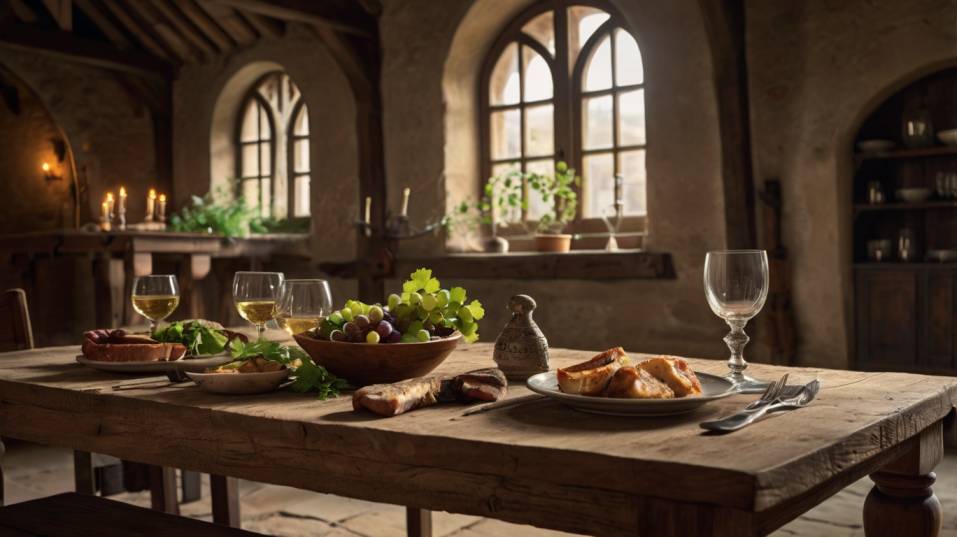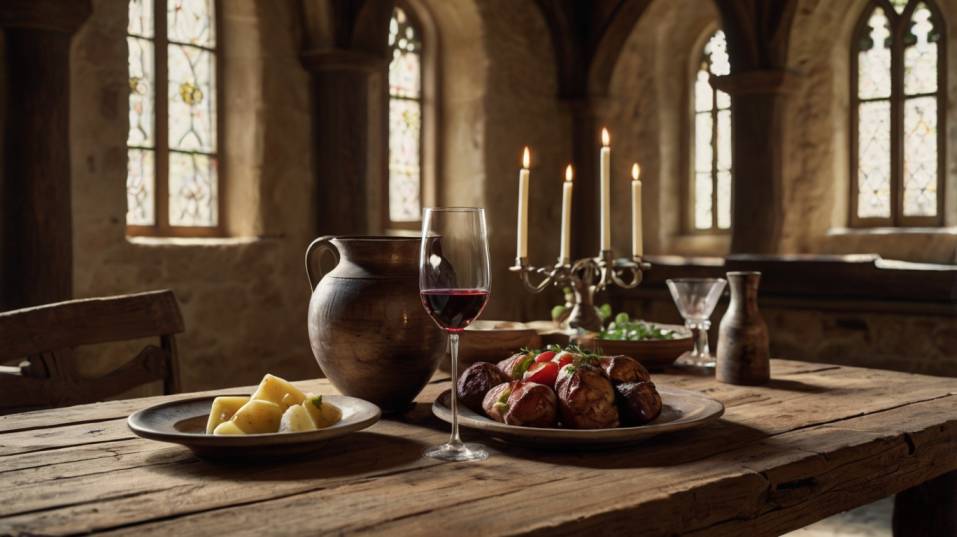What Medieval Banquets Tell Us About Wine Culture
Medieval banquets reveal the roots of wine culture—showing modern drinkers how to sip with purpose, pair instinctively, and taste confidently.

What if your next glass of wine wasn’t just about flavor—but about presence? Long before tasting notes or swirling glasses, medieval banquets made wine the centerpiece of experience.
Every pour carried meaning. Every pairing served a purpose. These feasts weren’t just indulgent—they were intentional.
And while the setting was grand, the principles still apply. If you're early in your wine journey, looking back could move your palate forward.
Wine Was Never Just a Beverage
To the medieval mind, wine was a symbol, a signal, and a sensory cue. It announced your status, your wealth, even your worldview. Monarchs and lords imported barrels from distant vineyards.
Clergy fermented their own stock for sacraments. In banquets, the first pour often honored the host or a guest of rank.
This wasn’t casual drinking. It was performative, deliberate. That might sound distant from how you pour wine today—but the mindset holds value.
The more intentional you are about how and when you open a bottle, the more tuned-in your palate becomes. You don’t need a ceremony. You just need to pause.
Think of it like setting the table before a good meal. It’s not about formality—it’s about creating space to pay attention.
When you uncork (or unscrew) a bottle with purpose, you give your senses a reason to engage. Swirl, smell, sip—yes. But first: slow down.

Texture Was a Tasting Tool—Even Before Anyone Called It That
Many medieval wines would be considered flawed by today’s standards—oxidized, rustic, often cloudy. But what they lacked in clarity, they made up for in texture.
Tannins were coarse, acids were sharp, and sweetness often balanced both. These wines were felt as much as they were tasted.
Even now, mouthfeel is one of the most revealing parts of any wine. Is it grippy? Silky? Bony? Plush?
Understanding how a wine moves across your tongue tells you more than a thousand adjectives can. And it directly shapes what foods the wine works with—or clashes against.
Start Tuning In
A creamy white (like Viognier) softens with roast chicken. A sharp Chianti slices through lasagna with laser precision. Feel before you analyze. Texture doesn’t lie.
And it’s not just about pairing—it’s about knowing what you actually enjoy.
Pairing Wasn't Fancy—It Was Functional
Medieval cooks didn’t design dishes to highlight wine. But they did instinctively understand balance. Dense dishes—roast game, pottage, spiced pies—were offset by sharp wines.
Sweetened meats found contrast in sour reds or sweet whites with acidity. The wines helped digest rich food. The food pulled nuance from the wine. You can do the same thing today, even without a feast.
Think in Contrasts
A simple way to think about it: acid balances fat, sweetness tames spice, and tannin loves protein. Try a crisp Albariño with fried food, or a rich Grenache with grilled lamb.
Don't overthink it—just notice what happens when wine and food interact in your mouth.
This is how pairing becomes instinctive. Not through memorization, but through practice. Try something. Observe. Adjust.
Wine Was Served to Set a Mood—Not Just Fill a Cup
In medieval banquets, wine wasn’t just poured—it was paced. Courses rolled out slowly. Guests were served strategically.
Lighter wines up front. Richer, bolder styles later. Some wines were infused with herbs. Others spiced for cold nights. It was never one-wine-fits-all.
Let the Wine Match the Moment
The takeaway? A single bottle doesn’t always serve the whole evening. Consider the arc. A high-acid white (like a Grüner Veltliner) can start things bright. Move to a medium-bodied red with dinner. End with something rounder, maybe off-dry.
Even if you only open one bottle, ask yourself: when do you want to drink it? At the start of the night, or as the meal ends? A wine’s impact changes depending on timing—and on your own attention span.
Pacing matters. It helps you notice more. And it subtly makes wine feel less like a transaction, more like a rhythm.
Confidence Was a Silent Language
At a medieval feast, your drinking habits sent social signals.
Holding your goblet too long or hesitating during a toast marked you as unsure—possibly untrustworthy. You didn’t need to talk about wine fluently. But you did need to handle it fluently.
Use Your Own Language
In today’s world, confidence around wine doesn’t mean knowing everything—it means being comfortable exploring. You don’t need to describe aromas perfectly.
You just need to notice them. Is the wine tight or expressive? Soft or edgy? Does it finish cleanly, or does it linger?
The more you practice describing wine in your own language, the less intimidated you’ll be. Don’t worry about being wrong. Focus on being specific.
The biggest mistake beginners make isn’t misidentifying flavors—it’s deferring to someone else’s opinion before they’ve trusted their own.
Final Thoughts: Learn by Tasting, Not Memorizing
Medieval banquets remind us that wine has always been about experience. Not just flavor—but setting, pacing, texture, and shared enjoyment.
Those drinkers didn’t need tasting charts to appreciate the structure of a bold red—or know when a crisp white cut through heavy food. You don’t either.
You just need to pay attention. Pour with intention. Notice how wine behaves with food, how it feels on your tongue, how it shifts over time in the glass. Build small rituals. Compare two wines side by side. Ask what you feel, not just what you taste.
Tonight, add something new to your wine ritual. Try decanting for the first time. Serve your wine cooler—or warmer—than usual.
Pair it with a dish you love and see what changes. Because every sip you take with more attention sharpens your palate. And over time, that’s how you stop guessing—and start knowing.




